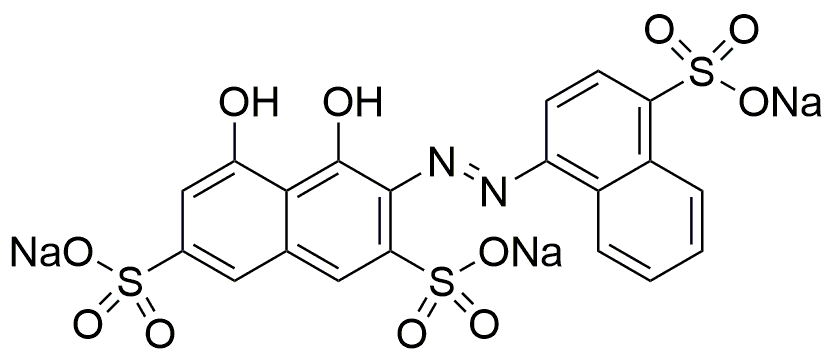Acid red 60 is widely utilized in research focused on:
- Dyeing Textiles: This compound is commonly used in the textile industry to produce vibrant red shades on fabrics. Its excellent colorfastness makes it ideal for clothing and upholstery.
- Food Coloring: Acid red 60 serves as a food dye, providing a bright red hue in various food products. It is particularly favored in processed foods and beverages due to its stability and safety profile.
- Biological Staining: In laboratory settings, it is employed as a staining agent for microscopy, helping researchers visualize cellular structures and processes, particularly in histology and pathology.
- Cosmetic Formulations: This chemical is also used in cosmetic products to impart color. Its compatibility with skin formulations makes it a popular choice for lipsticks and blushes.
- Research and Development: Acid red 60 is utilized in various chemical research applications, including the development of new dyes and pigments, due to its unique chemical properties and reactivity.
General Information
Properties
Safety and Regulations
Applications
Acid red 60 is widely utilized in research focused on:
- Dyeing Textiles: This compound is commonly used in the textile industry to produce vibrant red shades on fabrics. Its excellent colorfastness makes it ideal for clothing and upholstery.
- Food Coloring: Acid red 60 serves as a food dye, providing a bright red hue in various food products. It is particularly favored in processed foods and beverages due to its stability and safety profile.
- Biological Staining: In laboratory settings, it is employed as a staining agent for microscopy, helping researchers visualize cellular structures and processes, particularly in histology and pathology.
- Cosmetic Formulations: This chemical is also used in cosmetic products to impart color. Its compatibility with skin formulations makes it a popular choice for lipsticks and blushes.
- Research and Development: Acid red 60 is utilized in various chemical research applications, including the development of new dyes and pigments, due to its unique chemical properties and reactivity.
Documents
Safety Data Sheets (SDS)
The SDS provides comprehensive safety information on handling, storage, and disposal of the product.
Product Specification (PS)
The PS provides a comprehensive breakdown of the product’s properties, including chemical composition, physical state, purity, and storage requirements. It also details acceptable quality ranges and the product's intended applications.
Certificates of Analysis (COA)
Search for Certificates of Analysis (COA) by entering the products Lot Number. Lot and Batch Numbers can be found on a product’s label following the words ‘Lot’ or ‘Batch’.
*Catalog Number
*Lot Number
Certificates Of Origin (COO)
This COO confirms the country where the product was manufactured, and also details the materials and components used in it and whether it is derived from natural, synthetic, or other specific sources. This certificate may be required for customs, trade, and regulatory compliance.
*Catalog Number
*Lot Number
Safety Data Sheets (SDS)
The SDS provides comprehensive safety information on handling, storage, and disposal of the product.
DownloadProduct Specification (PS)
The PS provides a comprehensive breakdown of the product’s properties, including chemical composition, physical state, purity, and storage requirements. It also details acceptable quality ranges and the product's intended applications.
DownloadCertificates of Analysis (COA)
Search for Certificates of Analysis (COA) by entering the products Lot Number. Lot and Batch Numbers can be found on a product’s label following the words ‘Lot’ or ‘Batch’.
*Catalog Number
*Lot Number
Certificates Of Origin (COO)
This COO confirms the country where the product was manufactured, and also details the materials and components used in it and whether it is derived from natural, synthetic, or other specific sources. This certificate may be required for customs, trade, and regulatory compliance.

